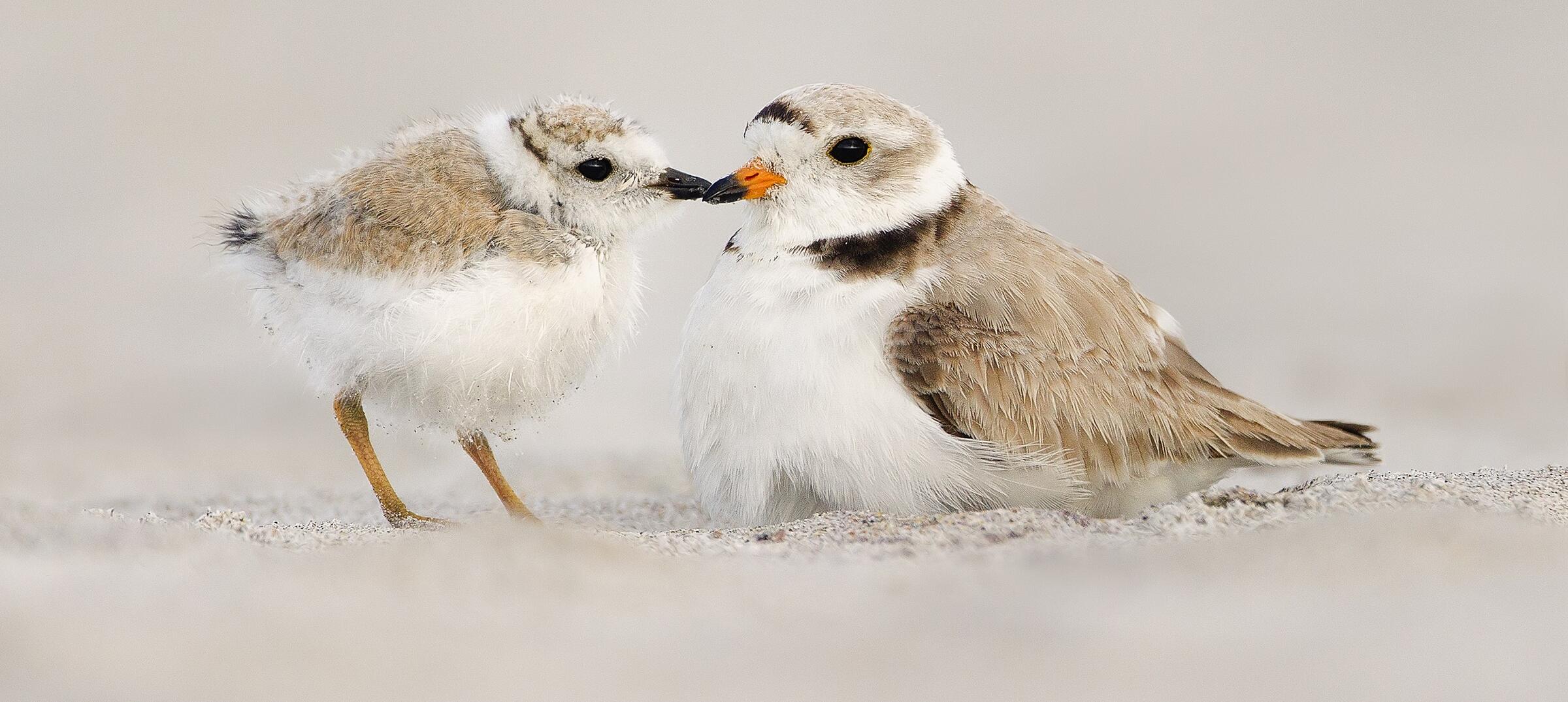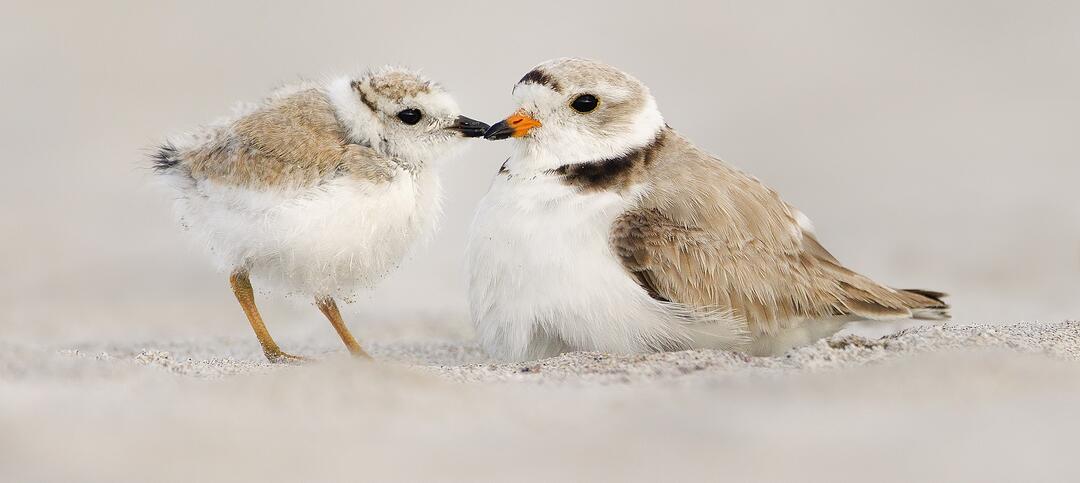At Lido Beach in the Town of Hempstead, and Jones Beach State Park, Audubon New York and partners will conduct a three month study to determine whether they can decrease human disturbance to help vulnerable birds.
Long Island, New York (6/1/22) – As birds like the federally endangered Piping Plover nest and raise chicks on beaches across the Long Island Sound and Atlantic Coast, a coalition of bird conservation leaders are testing the theory that beachgoers can save birds’ lives. At Lido Beach in the Town of Hempstead, and Jones Beach State Park, Audubon New York is conducting a three-month study to see if beach-nesting birds can raise more chicks when given space to nest and rest.
Every May through August, vulnerable Piping Plovers, American Oystercatchers, and Least Terns raise chicks on our beaches and offshore islands — chicks that weigh less than a single scoop of ice cream. When people and pets (usually dogs) get too close, the birds often fly off in fear. This leaves their chicks vulnerable to starvation, fatally high temperatures, predators, and even accidental death under foot or paw.
Note: Regulations prohibit dogs at Lido Beach, Point Lookout, and Jones Beach year-round.
“In a study published in Conservation Biology, Audubon’s Science team found that stewardship and management is essential to helping many coastal birds thrive. Now, we’re hoping to see which approaches work best. How can we teach people to keep birds safe by walking around flocks, and keeping at least 100 feet from fenced-off nesting areas? Do beachgoers notice signs, or is one-to-one conversation more helpful? These are the questions we’re hoping to answer,” said Shelby Casas, coastal program associate for Audubon New York and project lead.
“Jones Beach, with its miles of open sandy beach and ocean shoreline, is an important area for nesting shorebirds, and has the highest number of Piping Plover nests (about 30 annually) of any state park in New York. The beautiful beach also attracts thousands of visitors each year, and it will be so beneficial if we can help them understand how simple changes can make a big difference in the success of the nesting plovers,” said Annie McIntyre, Long Island regional environmental manager, New York State Parks.
"The shores of the Town of Hempstead have long served as a refuge for a diverse array of animal and plant life, as well as generations of township residents seeking to bask in the serenity of Long Island's coastal environs," said Hempstead Town Supervisor Don Clavin. "The Town of Hempstead remains committed to safeguarding our unique natural habitats and the many species that call it home."
At each site, local beachgoers can visit tables with educational materials, see new informational signs on the beach, and speak to stewards about how to help birds. Audubon will document all local efforts, and at the end of the study–and the nesting season–determine which tactics made a tangible impact.
Beachgoers around the state can watch for these signs to know when a bird is being disturbed:
- Did the bird fly away when you approached it?
- Did the bird stop feeding and start walking away or look at you on alert?
- Did the bird call out or act like it was injured to draw you away from its young?
If you notice any of these behaviors, try practicing these tips to help make our beaches safe for shorebirds and their chicks:
- When space allows, round your path around shorebird flocks and individual birds to give them enough space to feed and rest.
- Stay away from roped off areas where shorebirds are raising their young.
- Let birds tend to their nests and babies in the safety of the dry sand by walking in the wet sand.
- If pets are permitted on the beach, keep them on leash at all times and away from protected nesting areas.
- Pay attention to beach closures, which are in place to protect vulnerable shorebird populations
Want to learn more about how you can help protect shorebirds? Visit https://sos.atlanticflywayshorebirds.org/.
Partners in this study include: Audubon, Virginia Tech, Manomet, the US Fish and Wildlife Service, and the Atlantic Flyway Shorebird Initiative.
Media Contact: Sharon Bruce, sharon.bruce@audubon.org
How you can help, right now
Donate to Audubon
Help secure the future for birds at risk from climate change, habitat loss and other threats. Your support will power our science, education, advocacy and on-the-ground conservation efforts.





